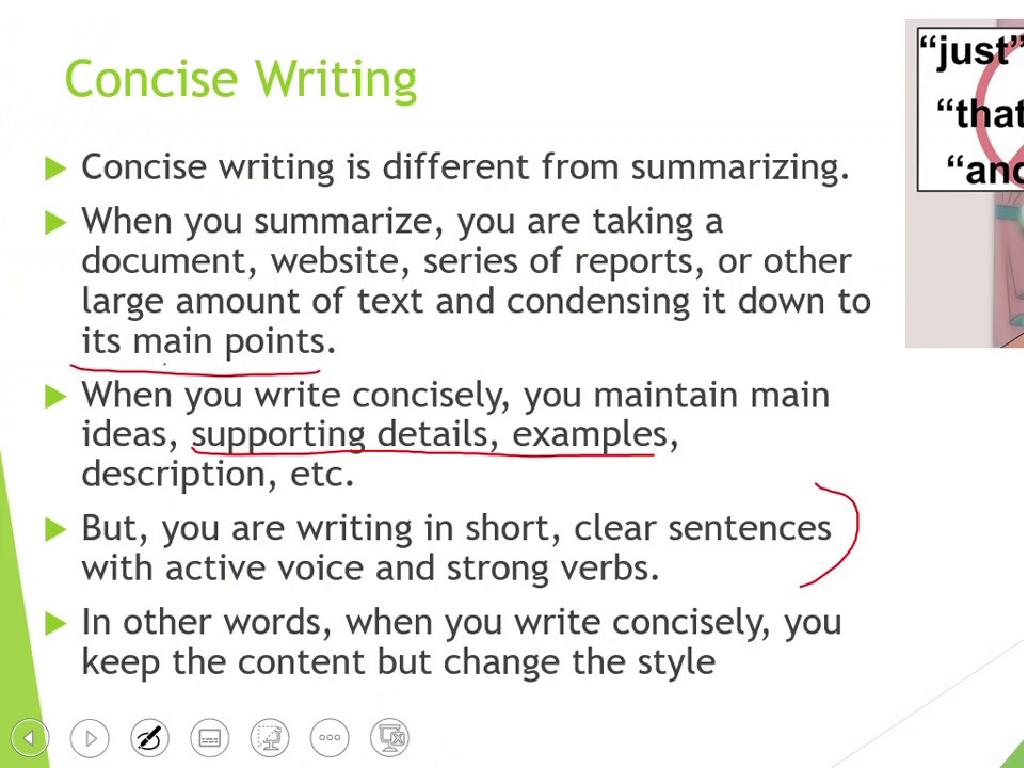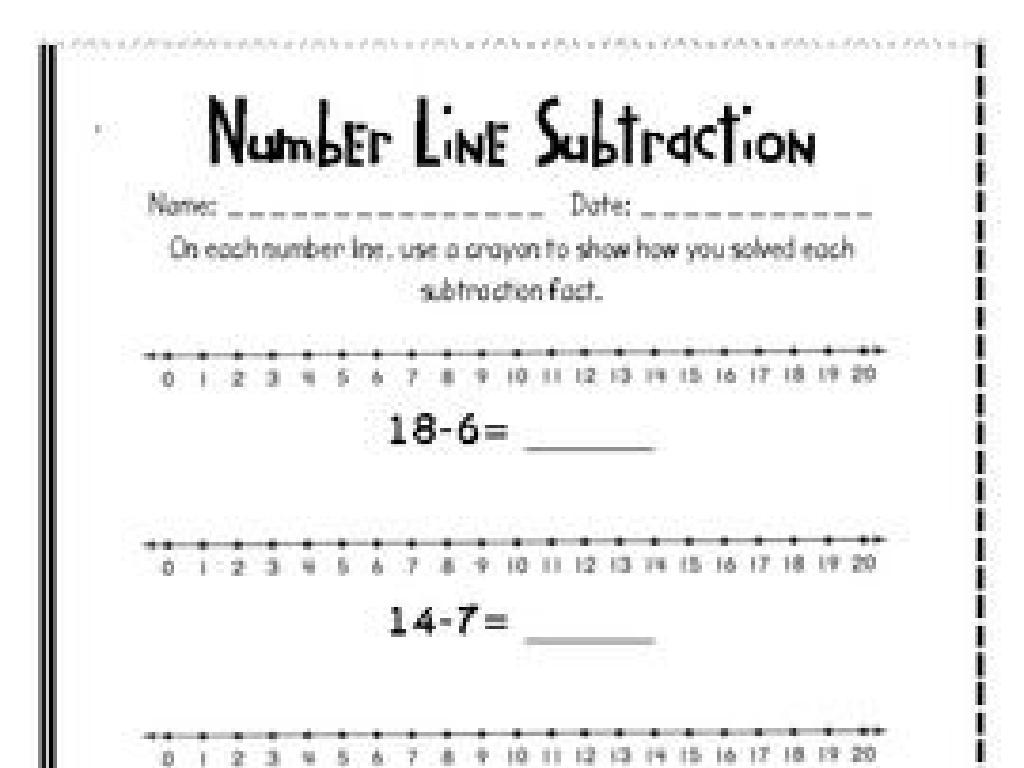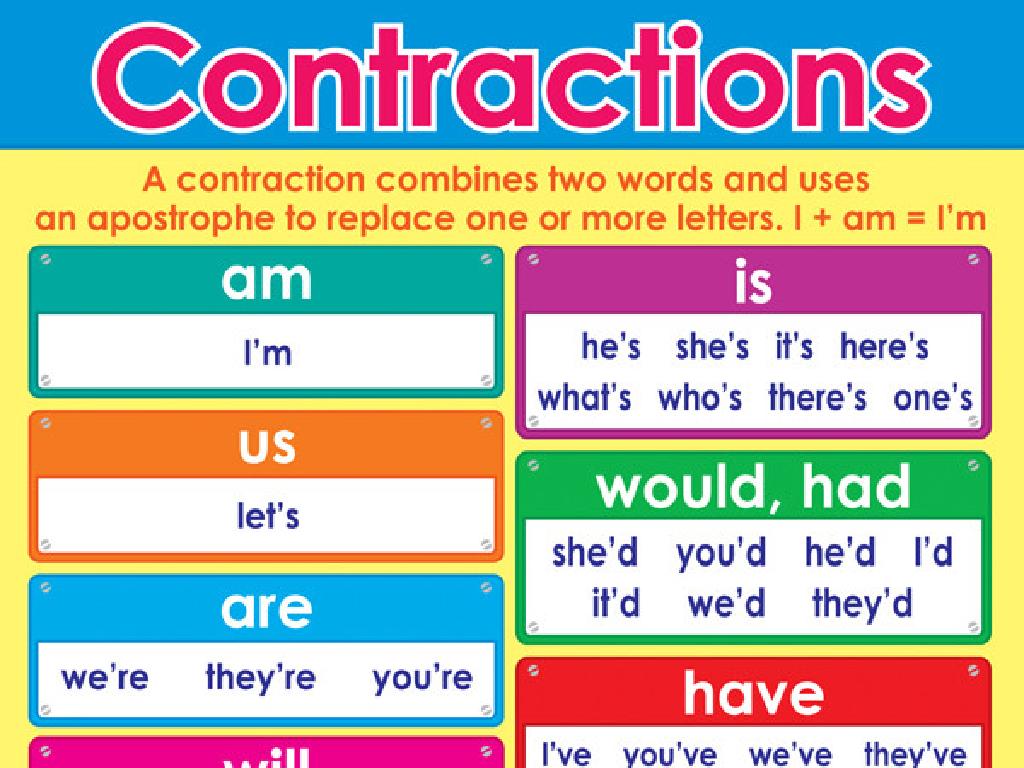Use Spelling Patterns To Sort Long And Short Vowel Words
Subject: Language arts
Grade: Third grade
Topic: Short And Long Vowels
Please LOG IN to download the presentation. Access is available to registered users only.
View More Content
Welcome to Short and Long Vowels!
– Learn about vowels
– Short vs. long vowel sounds
– Short vowels: ‘a’ as in ‘cat’, Long vowels: ‘a’ as in ‘cake’
– Sounds change word meanings
– ‘Cap’ vs. ‘cape’ – different vowels, different meanings
– Practice with examples
– Find words in a story and sort them by vowel sound
|
This slide introduces the concept of short and long vowel sounds to third graders, which is fundamental in understanding English pronunciation and spelling. Start by explaining what vowels are. Then, illustrate the difference between short and long vowels using common examples. Emphasize how a vowel’s length can alter the meaning of a word, such as ‘cap’ versus ‘cape’. Engage the class with an activity where they identify and sort words based on the vowel sounds after reading a story or passage. This will help them apply what they’ve learned in a practical context.
Exploring Vowels: Short and Long Sounds
– Vowels: Special alphabet letters
– Five vowels: A, E, I, O, U
– Vowels have short and long sounds
– Short sound: ‘a’ as in ‘apple’, Long sound: ‘a’ as in ‘ape’
– Sorting words by vowel sounds
– Practice by grouping words based on the vowel sounds
|
This slide introduces the concept of vowels to third-grade students, highlighting that vowels are unique letters in the alphabet with the ability to make different sounds. Emphasize the five vowels and demonstrate the short and long sounds each can make, using examples like ‘apple’ for the short ‘a’ sound and ‘ape’ for the long ‘a’ sound. Encourage students to listen and repeat the sounds. As an activity, students can sort a list of words into two groups based on the vowel sounds they hear. This will help them recognize spelling patterns and improve their pronunciation and reading skills.
Exploring Short Vowel Sounds
– Short vowels: quick sounds
– Examples: ‘a’ in ‘cat’, ‘e’ in ‘bed’
– ‘cat’, ‘hat’, ‘mat’ all have the short ‘a’ sound
– ‘i’ in ‘sit’, ‘o’ in ‘hot’
– ‘hit’, ‘sit’, ‘kit’ share the short ‘i’ sound
– ‘u’ in ‘cup’, common in short words
– Words like ‘hug’, ‘bug’, ‘rug’ use the short ‘u’
|
This slide introduces students to short vowel sounds, which are typically found in shorter words and make a quick sound. Use examples to illustrate each vowel sound and encourage students to think of additional words that fit the pattern. Highlight the importance of recognizing these sounds to aid in spelling and reading. Have students practice by reading words out loud and identifying the vowel sound. This foundational skill will help them with more complex words as they progress in their language arts education.
Sorting Words by Vowel Sounds
– Long vowels say their name
– Examples: ‘cake’, ‘me’, ‘time’
– ‘a’ as in ‘cake’, ‘e’ in ‘me’, ‘i’ in ‘time’
– Silent ‘e’ makes vowels long
– Words like ‘cape’, ‘hope’, ‘ride’ end with a silent ‘e’
– Practice sorting with examples
– Sort words ‘tape’, ‘cap’, ‘ride’, ‘rid’ by vowel sound
|
This slide introduces the concept of long vowel sounds to third-grade students. Emphasize that long vowels ‘say their name,’ meaning they make the same sound as the vowel’s name itself. Provide clear examples for each vowel and explain the common pattern of the silent ‘e’ at the end of words, which often indicates a long vowel sound. During class, engage students with sorting activities where they categorize words based on the vowel sounds. This will help reinforce their understanding of the difference between long and short vowels. Encourage students to think of additional words that fit the patterns discussed.
Understanding Vowel Sounds: Long and Short
– Spelling patterns guide vowel sounds
– ‘ai’ often means a long ‘a’ sound
– Like in ‘rain’, ‘train’, and ‘paint’
– ‘vcv’ pattern may indicate a long vowel
– For example, ‘tiger’ where ‘i’ is long
– Practice with different words
– Try sorting ‘cake’, ‘hat’, ‘bike’, ‘pin’
|
This slide introduces students to the concept of using spelling patterns to determine vowel sounds. Explain that certain letter combinations, like ‘ai’, usually signal a long vowel sound. The ‘vcv’ pattern (vowel-consonant-vowel) can also indicate that the first vowel is pronounced with its long sound. Provide students with examples and encourage them to practice by sorting words based on their vowel sounds. This activity will help reinforce their understanding of long and short vowels and improve their spelling skills.
Sorting Words with Vowel Sounds
– Practice sorting by vowel sounds
– Create columns for short and long vowels
– Short vowels: ‘a’ as in ‘cat’, Long vowels: ‘a’ as in ‘cake’
– Interactive word sorting activity
– I’ll say a word, you’ll choose the right column
– Decide where each word belongs
|
This slide is designed for an interactive class activity to help students distinguish between short and long vowel sounds. Set up two columns on the board, one for short vowels and one for long vowels. Introduce the concept that short vowels make a quick sound, like the ‘a’ in ‘cat’, while long vowels say their name, like the ‘a’ in ‘cake’. Show students a word and ask them to decide if it has a short or long vowel sound, then place it in the correct column. This activity will reinforce their understanding of vowel sounds and spelling patterns. Prepare a list of words with varying vowel sounds for the activity and be ready to assist students who may struggle with categorizing the words.
Exploring Vowel Sounds: Short vs. Long
– ‘bit’ has a short ‘i’ sound
– ‘bite’ features a long ‘i’ sound
– The ‘e’ at the end makes the ‘i’ say its name
– ‘hop’ contains a short ‘o’
– ‘hope’ has a long ‘o’ sound
– The ‘e’ at the end makes the ‘o’ say its name
|
This slide is aimed at helping third-grade students recognize the difference between short and long vowel sounds in words. Use the examples ‘bit’ and ‘bite’ to illustrate how a silent ‘e’ at the end of the word can change a short vowel sound into a long vowel sound, where the vowel ‘says its name.’ Similarly, compare ‘hop’ with ‘hope’ to reinforce this pattern. Encourage students to think of other words that follow this rule and to notice how the presence of a silent ‘e’ can alter the pronunciation of the vowel. This understanding will aid them in both reading and spelling activities.
Class Activity: Vowel Sorting Game
– Understand short vs. long vowels
– Sort words into two groups
– Use the vowel sounds to determine the group
– Work together with a classmate
– Cooperation and communication are key
– Present your findings to the class
– Practice public speaking and sharing knowledge
|
This interactive class activity is designed to help students recognize and differentiate between short and long vowel sounds in words. Students will pair up and receive a list of words which they will sort based on the vowel sounds. This exercise encourages teamwork and critical thinking as they discuss and decide where each word belongs. After sorting, each pair will present their list to the class, providing an opportunity for public speaking and reinforcing their understanding of vowel sounds. As a teacher, facilitate the activity by providing clear instructions, assisting pairs as needed, and encouraging a supportive environment for sharing. Possible variations of the activity could include using different word lists for each pair, incorporating a timed challenge, or creating a competitive element with a scoring system.
Conclusion: Mastering Vowel Sounds
– Celebrating our vowel learning journey
– Spelling patterns guide vowel sounds
– Patterns like ‘CVC’ for short and ‘CVCe’ for long vowels
– Practice makes perfect
– Aim to become vowel experts
|
As we wrap up our lesson on short and long vowels, it’s important to reinforce the students’ understanding of how spelling patterns can help them determine the sounds vowels make. Remind them that consonant-vowel-consonant (CVC) usually indicates a short vowel sound, while consonant-vowel-consonant-silent ‘e’ (CVCe) often signals a long vowel sound. Encourage regular practice with different words to solidify their learning. Acknowledge their hard work and progress, and motivate them to continue practicing to become confident in identifying and using short and long vowel sounds in their reading and writing.






